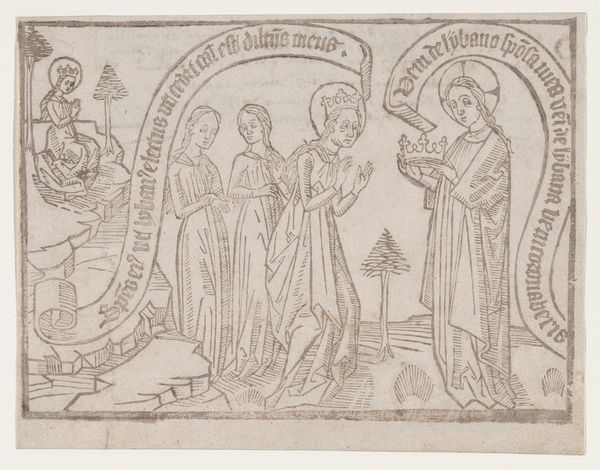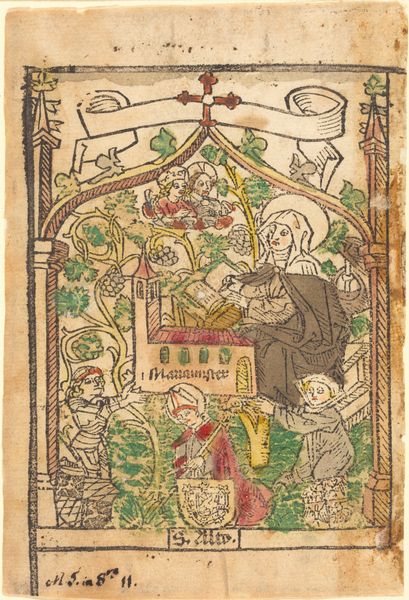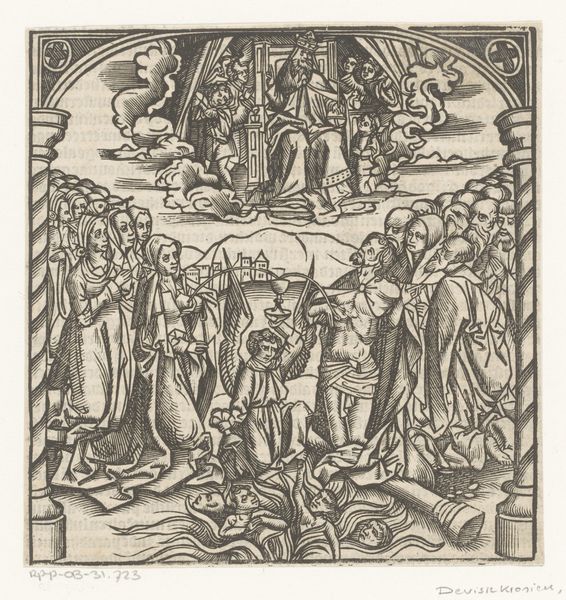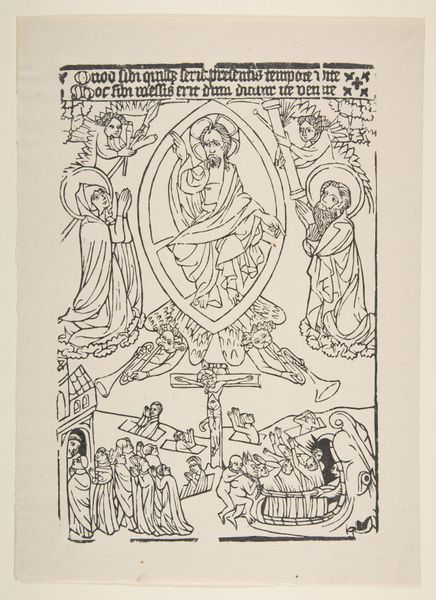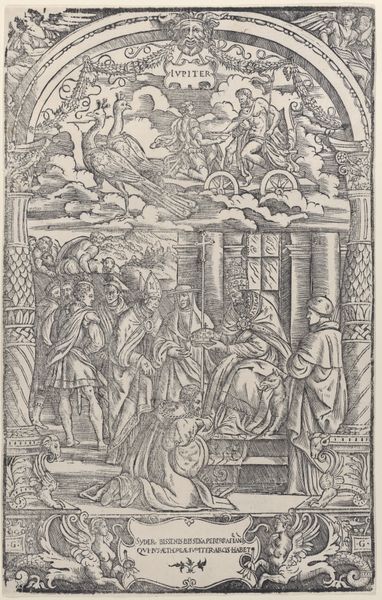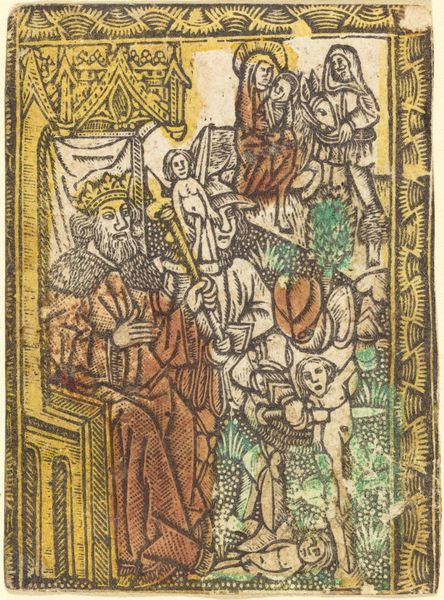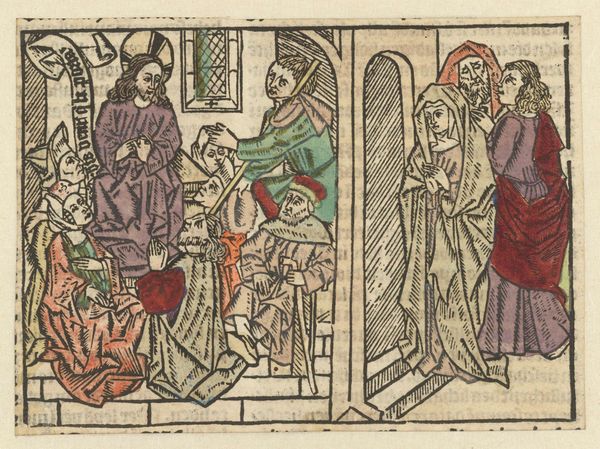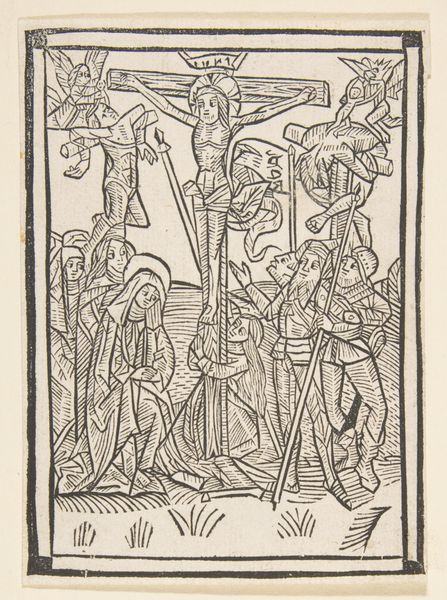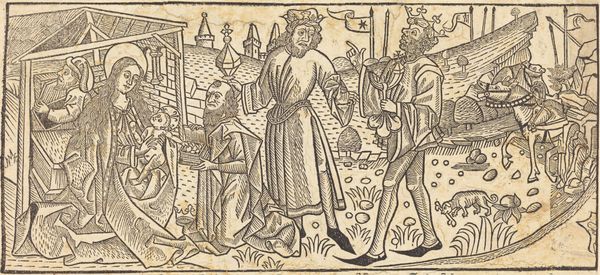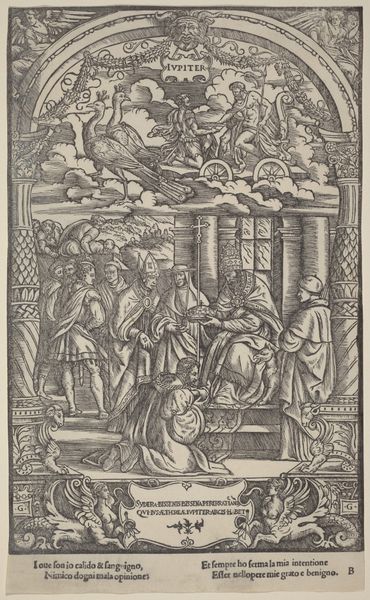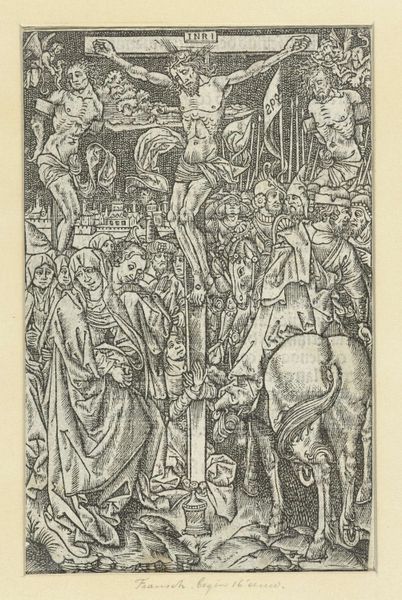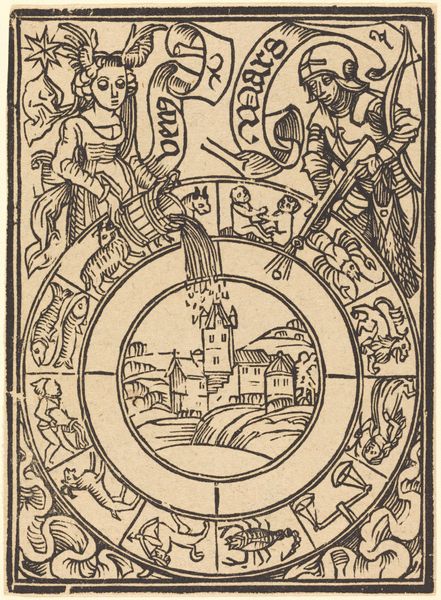
The Bridegroom Showing the Bride His Land, from a Canticum Canticorum blockbook, 1st edition 1455 - 1465
0:00
0:00
drawing, print, woodcut
#
drawing
#
medieval
#
narrative-art
#
pen drawing
# print
#
landscape
#
figuration
#
woodcut
Dimensions: Sheet: 5 in. × 7 1/4 in. (12.7 × 18.4 cm) Image: 4 15/16 × 7 3/16 in. (12.5 × 18.2 cm)
Copyright: Public Domain
Editor: So this is "The Bridegroom Showing the Bride His Land, from a Canticum Canticorum blockbook, 1st edition," created around 1455-1465. It’s a woodcut, so the lines are really bold and clear. It feels very… symbolic. What cultural significance can you find here? Curator: Indeed. Consider the symmetry. The bride and groom stand framed by text scrolls, leading us, like participants in a medieval morality play, from the security of the city on the left to the bustle of agricultural life on the right. What resonates is how this simple image echoes deeper anxieties – anxieties about security, about labor, about providence itself. Editor: You mean, like, leaving the known for the unknown? I do get a sense of…uncertainty. But I thought the bridegroom was showing off, being proud of his land. Curator: But *what kind* of land? Is this prosperous abundance, or toiling necessity? Look at the people bent over in the fields. The woodcut’s lines, while clear, also depict a demanding, almost inescapable labor. The 'gift' of land comes with the implicit demand to work it, doesn't it? What feelings does this duality evoke in you? Editor: Well, now I see it differently! It's not just showing off, it’s a responsibility. Like a visual metaphor for the burdens and rewards of marriage. Curator: Precisely. And isn't that the essence of so many enduring symbols? They offer layers of meaning, changing and evolving with the viewer's perspective. Even these figures are iconic, like a painting but more broadly understood. What is striking is the text included alongside this print. Do you wonder what language it may have been, who owned it? Editor: Definitely makes you think about how things change…and how they stay the same. Curator: Absolutely. Visual language transcends time, continually reshaping itself in the mirror of our understanding.
Comments
No comments
Be the first to comment and join the conversation on the ultimate creative platform.
